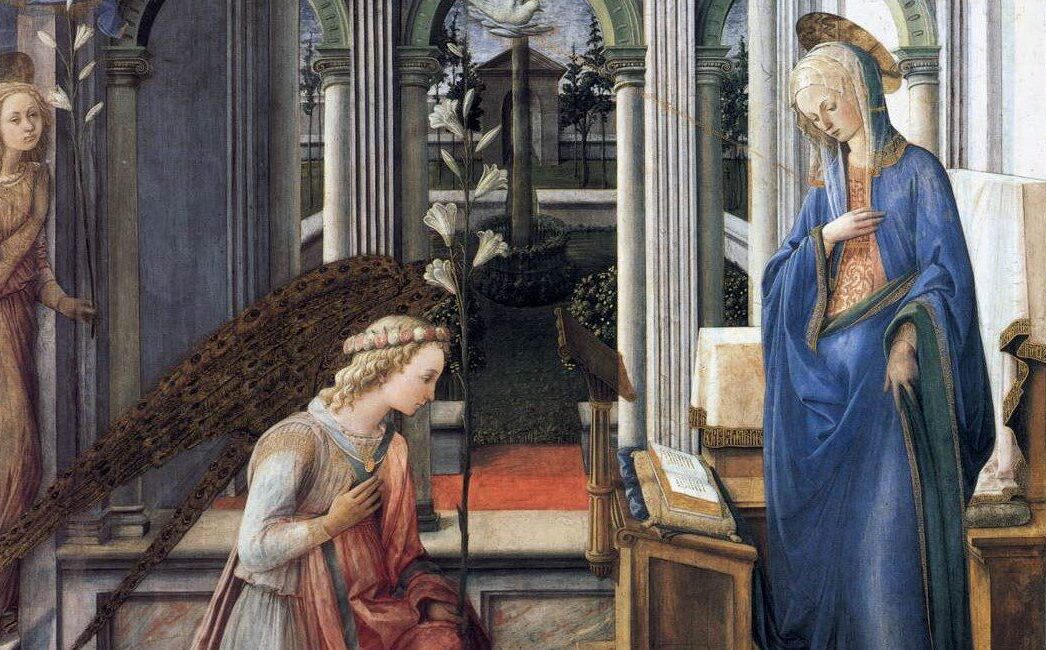The Constitution on the Sacred Liturgy, Sacrosanctum Concilium, was the first document that came out of the Second Vatican Council. The Council Fathers approved it almost unanimously (2174 votes to 4) and Pope Paul VI promulgated it on December 4, 1963. According to Benedict XVI, who participated in the council as a theological expert, this was not just a pragmatic decision, since liturgy was a theme that seemed much less controversial than others; rather, beginning with divine worship reflected the right ordering of the Church’s life and mission, and in particular “God’s primacy, the absolute precedence of the theme of God…. When the focus on God is not decisive, everything else loses its orientation.”[1]
Sacrosanctum Concilium
The conciliar constitution clearly is a fruit of the liturgical movement, which had reached the height of its influence in the middle decades of the 20th century. Building on Pope Pius XII’s encyclical Mediator Dei of 1947, the first chapter of Sacrosanctum Concilium [SC] offers principles of liturgical theology as well as general and particular norms for liturgical reform. The council called for a general instauratio (“restoration” or “renewal”) of the liturgy in order to communicate more clearly and effectively the graces signified in sacred signs. Those parts that are not of divine institution, but have grown through history, were to be ordered in such a way that both texts and rites would be more accessible and facilitate the full, active participation of the faithful (SC, 21).
With a view to maintaining a balance between retaining “sound tradition” and allowing for “legitimate progress,” the constitution called for a careful study of those parts of the liturgy that were to be “revised” (recognoscendis) (SC, 23). Such a revision or review can include even substantial modifications, but still has a limited scope.[2] This is certainly highlighted by Sacrosanctum Concilium’s insistence that “there must be no innovations unless the good of the Church genuinely and certainly requires them; and care must be taken that any new forms adopted should in some way grow organically from forms already existing” (23). However, the Consilium for Implementing the Council’s Constitution on the Sacred Liturgy, which was established with Paul VI’s Motu Proprio Sacram liturgiam of January 25, 1964, gave a maximalist reading of recognitio and launched a thorough-going reworking of all the existing liturgical books of the Roman Rite.[3]
Postconciliar Reform
The overarching principle of the postconciliar reform, endorsing a key objective of the liturgical movement, was to promote “active participation” in the liturgy. The Council Fathers desired that the faithful should take part in the celebration of the liturgy “fully aware of what they are doing, actively engaged in the rite, and enriched by its effects” (11). In the immediate postconciliar period, this principle manifested itself especially in three concrete steps of reform: 1) the full introduction of the vernacular for liturgical celebrations, 2) the simplification of rites, and 3) their adaptation to local cultures, above all, but not only, in mission territories.
The Sacred Congregation of Rites’ instruction Inter Oecumenici (September 26, 1964) introduced moderate changes in the Ordo Missae.[4] For instance, Psalm 42 was removed from the introductory rites, some prayers that used to be said in a low voice were now meant to be audible, including the doxology of the Canon of the Mass and the embolism after the Lord’s Prayer. The structure and contents of the liturgical year largely remained the same.
The first of the “interim missals,” as they have been called with hindsight, was published and implemented in the U.S. already on November 29, 1964 (the First Sunday of Advent). Contrary to the directives of the Inter Oecumenici, this edition contained most of the texts that could be used in the vernacular only in English, not in Latin. The extensive use of English and the sweeping introduction of new altars where the priest was facing the people were experienced as a significant rupture in the liturgical life of the Catholic Church.[5]
Further changes were made to the Mass until the promulgation of the substantially altered Ordo Missae and the typical edition of the Missale Romanum of 1969/1970. While the Roman Rite had for many centuries only used one Eucharistic prayer (Canon Missae), the number of Eucharistic prayers was extended to four in the new Order of Mass and several others have been added since.[6] There were significant changes in the “soft spots” of the Roman Mass that had developed in the course of the medieval period (introductory, offertory and concluding rites). The structure of the liturgical year was thoroughly reworked, including the removal of Pre-Lent (Septuagesimatide) and the Pentecost Octave. This was certainly the most extensive and thorough reform of the Roman Rite ever since its formative period in late antiquity. Going beyond the revision of liturgical books, the social and cultural transformations of the 1960s also affected the ritual shape of the Mass: jazz, folk and pop music found their ways into the liturgical celebration; historical patrimony was replaced with modern forms of artistic impression.
Loss and Gain
These profound changes have made the Mass more accessible to the faithful and have enabled them to be more actively and consciously involved in its celebration. The new liturgical books offer greater flexibility for the sacramental rites, which has been used with great profit in missionary territories. The Roman Lectionary’s three-year cycle for Sundays and two-year cycle for weekdays have enriched the use of Holy Scripture in the Mass, as envisaged by the Council Fathers (SC, 24).
Along with real benefits, however, the extraordinarily rapid production and implementation of the new liturgical books and their many vernacular translations have created problems, which we now see more clearly at some historical distance. Joseph Ratzinger was himself formed by the liturgical movement and stated his conviction that “this new missal [of Paul VI]…brought with it a real improvement and enrichment.”[7] On the other hand, as pope he spoke of “misunderstandings and errors in the practical implementation of the reform,” since “not infrequently…‘active participation’ has been confused with external activity.”[8] The focus on revising external forms has contributed to a self-contained notion of worship that does not transcend ordinary experience and is not transparent to the sacramental presence of Christ.
This delicate working of ritual was not sufficiently recognized in the liturgical reform, even where it was applied with the best intentions. Ritual as a system of symbolic communication is characterized by custom, rigor, and repetition. Hence it gives the impression of being perennial, and it is precisely this stability that makes it work as ritual. Whether or not such claims are made explicitly, rites embody the traditions of the community formed by them. The at least tacit assumption of the liturgical reform was that ritual forms can easily be exchanged and replaced with their historical antecedents. However, such ritual change can have a lasting detrimental effect on the system of symbolic communication as such, by suggesting that ritual does not matter in the end.
Conclusion
In this situation, Benedict XVI has called for an effort to resume the liturgical renewal desired by the council in a different key: “In a changed world, increasingly fixated on material things, we must learn to recognize anew the mysterious presence of the Risen Lord, which alone can give breadth and depth to our life.”[9] In the next instalment of this series, I will reflect on impulses for such liturgical renewal in the pontificates of Benedict and Francis.
For previous instalments of Father Lang’s Short History of the Roman Rite of Mass series, see:
- Part I: Introduction: The Last Supper—The First Eucharist
- Part II: Questions in the Quest for the Origins of the Eucharist
- Part III: The Third Century between Peaceful Growth and Persecution
- Part IV: Early Eucharistic Prayers: Oral Improvisation and Sacred Language
- Part V: After the Peace of the Church: Liturgy in a Christian Empire
- Part VI: The Formative Period of Latin Liturgy
- Part VII: Papal Stational Liturgy
- Part VIII: The Codification of Liturgical Books
- Part IX: The Frankish Adoption and Adaptation of the Roman Rite
- Part X: Monastic Life and Imperial Patronage
- Part XI: Reform Papacy and Liturgical Unification
- Part XII: The Impact of the Franciscans on the Roman Mass
- Part XIII: Eucharistic Devotion of the High Middle Ages
- Part XIV: The Later Middle Ages: All Decay and Decline?
- Part XV: The Rite of Mass at the Eve of the Protestant Reformation
- Part XVI: The Shape of the “Tridentine Mass”
- Part XVII: From the Tridentine Period to the Liturgical Movement
Father Uwe Michael Lang, a native of Nuremberg, Germany, is a priest of the Oratory of St. Philip Neri in London. He holds a doctorate in theology from the University of Oxford, and teaches Church history at Mater Ecclesiae College, St. Mary’s University, Twickenham, and Allen Hall Seminary, London. He is an associate staff member at the Maryvale Institute, Birmingham, and on the Visiting Faculty of the Liturgical Institute in Mundelein, IL. He is a Corresponding Member of the Neuer Schülerkreis Joseph Ratzinger / Papst Benedikt XVI, a Member of the Council of the Henry Bradshaw Society, a Board Member of the Society for Catholic Liturgy, and Editor of Antiphon: A Journal for Liturgical Renewal.
Notes:
Benedict XVI, “On the Inaugural Volume of My Collected Works,” in Theology of the Liturgy: The Sacramental Foundation of Christian Existence, Joseph Ratzinger Collected Works 11, ed. Michael J. Miller, trans. John Saward, Kenneth Baker, S.J., Henry Taylor, et. al. (San Francisco: Ignatius Press, 2014), xv–xviii, at xv. ↑
- See Pontifical Council for Legislative Texts, “Nota Esplicativa X: La natura giuridica e l’estensione della «recognitio» della Santa Sede,” in Communicationes 38 (2006), 10-17, at 10-11. ↑
- A first-hand account of the Consilium’s work is given by its long-term secretary, Annibale Bugnini, in his autobiographical The Reform of the Liturgy: 1948-1975, trans. Mathew J. O’Connell (Collegeville, MN: Liturgical Press, 1990). ↑
Sacred Congregation of Rites, Instruction for the Right Implementation of the Constitution on the Sacred Liturgy Inter Oecumenici (September 26, 1964), no. 48. The editio typica of the revised Ordo Missae was published on January 27, 1965; see Notitiae 1 (1965), 101-102. ↑
See the instructive article of Susan Benofy, “The Day the Mass Changed”, in Adoremus Bulletin Online Edition XV,10 (February 2010) and XVI,1 (March 2010): < https://adoremus.org/2010/02/the-day-the-mass-changed/ > and < https://adoremus.org/2010/03/the-day-the-mass-changed-how-it-happened-and-why-part-ii/>. ↑
See the Eucharistic Prayers for Reconciliation and for Various Needs in the Appendix to the Order of Mass of the third typical edition of the Roman Missal, as well as the Eucharistic Prayers for Masses with Children. ↑
Joseph Ratzinger Milestones: Memoirs 1927–1977, trans. Erasmo Leiva-Merikakis (San Francisco: Ignatius, 1998), 148. ↑
Benedict XVI, Address to Participants in the Congress Promoted by the Pontifical Athenaeum of Saint Anselm on the 50th Anniversary of Foundation (6 May 2011). ↑
- Benedict XVI, Video Message for the Closing of the 50th International Eucharistic Congress in Dublin (June 17, 2012). ↑
Image Source: AB/manhhai on Flickr



